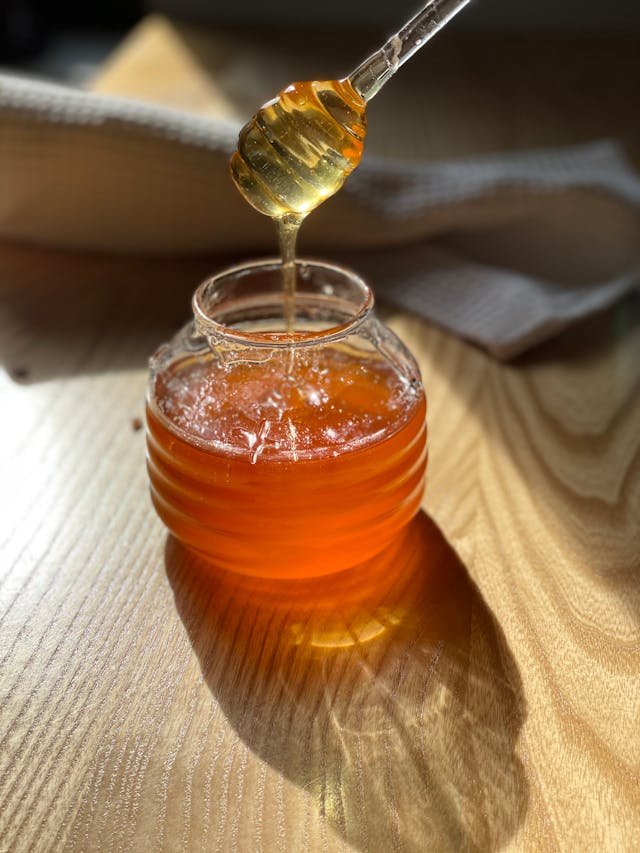Honey is one of nature’s sweetest gifts. For thousands of years, it has been more than just a delicious treat. People across the world have used honey for food, medicine, and even religious rituals. The story of honey spans continents and centuries. It reflects its importance in many cultures.
Honey has a rich history. It dates from ancient cave paintings in Spain to modern beekeeping in Australia. Civilizations have cherished this golden substance. The ancient Egyptians placed it in tombs. The Greeks and Romans used it in their diets and medicines. In medieval Europe, honey was essential in cooking and medicine. Honey became a key part of daily life and traditions across Africa, Asia, and the Americas.
As we explore the history of honey, we will see how it has evolved over time. Early humans collected honey from wild bees, risking stings for the sweet reward. Over time, beekeeping techniques improved, leading to the modern practices we see today. Each region has its own unique story of how honey was used and valued.
Honey’s journey through history is not just about food. It is about culture, health, and innovation. Ancient texts praised its healing powers. Modern science has confirmed many of them. Honey has antibacterial properties and is used in various health remedies.
Today, honey remains a symbol of health and prosperity. It is used in cooking, skincare, and natural remedies. By examining the history of honey, we can appreciate its lasting significance. We can observe the ways it still sweetens our lives.
Honey in Ancient Civilizations
Early Evidence of Honey Use
The history of honey goes back to the Stone Age. The oldest evidence of honey is found in cave paintings in Spain. These paintings are over 8,000 years old. They show people collecting honey from wild bees.
Honey in Ancient Egypt
In ancient Egypt, honey was of great importance. The Egyptians utilized honey as a foodstuff and a medicine. They also employed honey in religious rituals. They believed honey to be a gift from the gods. Honey was frequently discovered in the tombs of pharaohs. Honey was also utilized in the mummification processes.
Honey in Mesopotamia and Ancient Greece.
In Mesopotamia, one of the earliest civilizations, honey was utilized in religious rituals. It was also utilized as a sweetener. The ancient Greeks also loved honey. They used honey to sweeten their food and drinks. They believed honey had healing properties. Greek athletes ate honey to boost their energy before the Olympic Games. Honey was a key ingredient in their diet and was often given as an offering to the gods.
Honey in Ancient China and India
In ancient China, honey was used as a medicine and in cooking. The Chinese used honey in traditional medicines, believing it extended life. In India, honey is mentioned in ancient texts such as the Vedas and Ayurveda. It was used for its medicinal properties and in various religious rituals. Honey was considered one of the five elixirs of immortality.
Honey in Medieval Europe
Role in Medieval Europe
In the Middle Ages, honey was still very popular. Sugar was not common in Europe at that time. People used honey to sweeten their food. Honey was also used to make mead, an alcoholic drink. Mead was a popular drink in medieval Europe, especially in northern regions.
Honey in Medicine and Food
Honey had a special place in medicine during the Middle Ages. Doctors used honey to treat wounds and illnesses. People believed honey could cure many diseases. Monks often kept bees and produced honey in their monasteries. They used honey to make medicinal concoctions and to preserve fruits.
Honey in Norse and Slavic Cultures
In Norse mythology, honey was associated with the gods. Mead was believed to be a divine drink that bestowed wisdom and poetry. In Slavic cultures, honey was used in traditional dishes and drinks. Honey festivals were common, celebrating the harvest and production of honey.
Honey in Africa
Traditional Honey Harvesting
In Africa, traditional methods of honey harvesting are still practiced. People use smoke to calm the bees and then collect the honeycomb. These methods have been passed down through generations. Honey hunting is a communal activity in many African tribes.
Honey in African Medicine and Culture
Honey is used in African traditional medicine to treat wounds and infections. It is also an important part of many cultural rituals and ceremonies. For example, the Hadza people of Tanzania have collected honey for thousands of years. They use it as a major food source and for medicinal purposes.
Honey in the Americas
Honey Use Among Native American Tribes
Before European settlers arrived, Native American tribes utilized honey from native bee species. They valued honey for its sweetness and medicinal properties. They also utilized honey to preserve fruits and berries.
Introduction of European Honeybees
European settlers brought honeybees to the Americas in the 17th century. These bees, known as European honeybees, were more productive than native bees. This led to an increase in honey production. Honey became a staple in American households.
Modern Honey Production in the Americas
Today, the United States, Mexico, and Brazil are major producers of honey. Modern beekeeping techniques have increased honey yields. Many dishes use honey. It is also in remedies and skincare products.
Honey in Asia
Honey in Traditional Chinese and Ayurvedic Medicine
In traditional Chinese medicine, honey is used to treat various ailments. It is believed to nourish the body and promote longevity. Honey is also a key ingredient in many Ayurvedic remedies in India. It is used to balance the body’s energies and to treat coughs and digestive issues.
Honey Production in Modern Asia
Asia is a major producer of honey, with China being the largest producer in the world. The region is known for its diverse types of honey. For example, it has Manuka honey from New Zealand. It is highly valued for its healing properties. Modern beekeeping practices have improved honey production and quality.
Religious and Cultural Significance of Honey
Honey in Ancient Religious Texts and Rituals
Many ancient religious texts mention honey. Islam holds honey in great esteem. The Quran mentions honey’s healing properties. Traditional Islamic medicine uses it. In the Bible, the Promised Land is “a land flowing with milk and honey.” Honey brings abundance and blessings. In Hinduism, honey is one of the five elixirs of immortality. Many religious rituals use it. In Christianity, honey is a symbol of wealth and joy. It is used in various religious ceremonies and rituals. Honey is also important in Buddhism and other religions. It is often offered in rituals and used in traditional remedies.
Honey in Modern Religious Practices
Today, honey continues to hold religious significance. It is used in various ceremonies, from weddings to religious feasts. Honey is also given as a gift during religious holidays and festivals. Its symbolism of sweetness and health makes it a valued item in many cultures.
Modern Honey Production and Uses
Changes in Honey Production
The way people produce honey changed in the 19th century. A man named Lorenzo Langstroth invented the modern beehive. This beehive made it easier to collect honey without harming the bees. Beekeeping became a popular hobby and profession. Today, producers use advanced techniques and equipment for honey production.
Honey in Different Cultures
Today, honey is enjoyed all over the world. Different countries have their own special types of honey. For instance, in Australia, there is Manuka honey. It is renowned for its robust flavor and health benefits. Honey is used in cooking, baking, and as a natural sweetener for beverages. It is also used in skincare products for its moisturizing and healing properties.
Health Benefits of Honey
People have believed in the health benefits of honey for a long time. Ancient Egyptians used honey to treat wounds. The Greeks and Romans believed that honey could cure many illnesses. Modern science has confirmed some of these beliefs. Honey has antibacterial properties. This means it can help fight infections. Honey is also used to soothe sore throats and coughs. It is a natural source of energy and is rich in antioxidants. These antioxidants help protect the body from damage caused by free radicals.
Honey in Contemporary Cooking and Skincare
Honey is a popular ingredient in modern cooking. It is used to sweeten desserts, sauces, and beverages. Honey’s unique flavor enhances many dishes. In skincare, honey is valued for its moisturizing and healing properties. It is used in facial masks, lotions, and lip balms.
Conclusion
The history of honey is long and rich. From ancient cave paintings to modern beekeeping, honey has always been valued by humans. It is not just a food; it is a symbol of health and prosperity. Honey continues to be an important part of our lives today. Whether used in cooking, medicine, or skincare, honey’s benefits are timeless.
Frequently Asked Questions (FAQ)
- Why was honey important in medieval Europe?
Honey was important in medieval Europe. It was a primary sweetener before sugar was widespread. It was also used in medicine, for making mead, and in various cultural traditions.
2.How did traditional honey harvesting methods differ in Africa and the Americas?
African honey hunters smoked out the bees and grabbed the honeycomb. Native American tribes used native bee species. They employed various techniques, such as cutting down bee trees to access the honey.
3.What health benefits of honey were recognized by ancient civilizations?
Ancient civilizations knew that honey kills bacteria. They used it to treat wounds and illnesses. It was also used to soothe sore throats, improve digestion, and boost energy.
4.What role did honey play in traditional Chinese medicine?
In traditional Chinese medicine, honey was used to treat many ailments. These include digestive problems, coughs, and skin wounds. It was also believed to promote longevity and overall health.
5.What are some unique uses of honey in ancient Indian practices?
In ancient Indian practices, honey was used in Ayurvedic medicine. It was used for its healing properties. The Vedas list it as one of the five immortality elixirs. People used it in many religious rites.
6.How did the introduction of European honeybees impact honey production in the Americas?
European honeybees came to the Americas in the 17th century. They greatly increased honey production because they were more productive than native species. This led to a boom in honey availability and its use in American cuisine and medicine.



